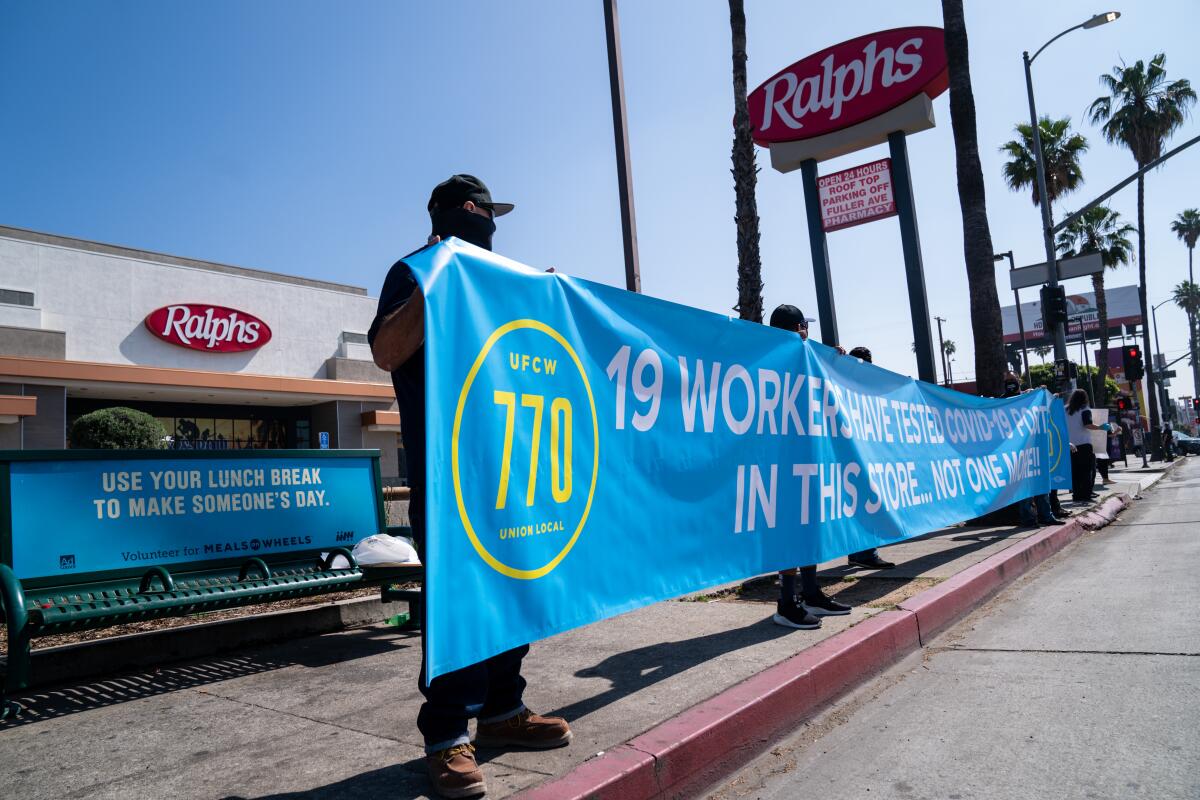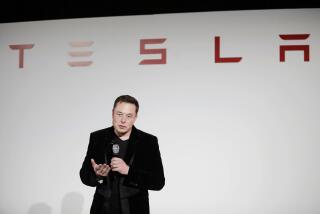CEOs cut millions of jobs amid coronavirus yet keep their lofty bonuses

Even CEOs are starting to get squeezed by the economic realities of this pandemic.
But compared to their employees, a growing number of critics still say it’s not nearly enough.
So far, top executives of many major U.S. corporations — including some at the very epicenter of the crisis — have mostly held on to their outsize pay packages after giving up some of their salaries. And even as rank-and-file jobs vanish, some still have a distant shot at collecting bonuses for 2020, albeit smaller than last year’s.
How things play out will depend on the economy, financial markets and ultimately the coronavirus itself. But as the pain grows for ordinary workers, executive pay — a divisive issue in an age of extraordinary inequality — has come to the fore once again.
Consider, for example, Tenet Healthcare Corp., which has furloughed thousands in the wake of the coronavirus.
Chief Executive Ronald Rittenmeyer vowed to give up three months’ pay — roughly $390,000 — to a fund set up years ago to help employees struggling to make ends meet. In a letter to investors in April, he wrote the donation was made “in honor” of the hospital chain’s 113,000 doctors, nurses and others, many of whom work on the front lines in the fight against Covid-19.
Yet even after the pay cut, Rittenmeyer will still rake in more than $1 million in salary. That’s not counting at least a $875,000 bonus, stock awards worth $11.3 million through 2022 and a contract that entitles him to millions of dollars more in the future.
Total compensation figures have yet to be finalized for the current year, but the $390,000 that Rittenmeyer is forgoing would amount to only 2% of what he received last year.
What’s more, Tenet still pays Rittenmeyer’s predecessor, who left three years ago, roughly $245,000 each month as part of his severance package.
It’s little wonder one of the largest U.S. unions criticized Tenet’s executive pay and said Rittenmeyer’s donation amounted to little more than “a gesture.”
In a letter to Tenet’s investors, Ken Hall, general secretary-treasurer for the International Brotherhood of Teamsters, said the payouts were “particularly inappropriate” when resources are sorely needed to support Tenet’s front-line workers. He asked shareholders to vote against the pay package at the company’s annual meeting on May 28.
A Tenet spokesman said executive-pay decisions were made before the outbreak and payouts are tied to long-term goals. He added the furloughs were carried out to focus resources on COVID-19 care and some employees are back on the job.
Rittenmeyer, who declined to be interviewed, isn’t the only CEO facing scrutiny. Grocery store chain Kroger Co., under fire from employees and unions over its plan to scrap its extra $2 per hour in hazard pay this weekend, disclosed that CEO Rodney McMullen was awarded $21.1 million in compensation for 2019. Compare that to a typical worker, who got less than $27,000 in pay and benefits.
Kroger on Friday announced $130 million in “thank you pay” for hourly workers through mid-June. That works out to $400 per full-time employee and $200 per part-time employee.
A Kroger spokeswoman pointed out the company’s average wage is $15 an hour and that it offers a range of safety precautions, from testing to emergency leave, to employees.
All across the country, as millions of Americans are thrown out of work, tough questions are once again being asked about executive pay.
Airlines such as United Airlines Holdings Inc. and Southwest Airlines Co. began announcing CEO pay reductions in March, and dozens of companies across industries have followed. Some, including General Electric Co.’s Larry Culp, will forgo their entire salary for the rest of 2020.
On one hand, the moves are a conscious, if symbolic, display of solidarity and shared sacrifice, an effort by the bosses not to appear tone-deaf. But on the other, they lay bare the gaping economic disparities between those at the very top of corporate America and everyone else.
“If you’re going to ask your staff to give up salary, so should you,” said Charles Elson, director of the University of Delaware’s Center for Corporate Governance. “The question is, how will the rest of the pay package play out?”
CEOs at S&P 500 companies receive on average $1.3 million in salary, roughly 20 times the median U.S. household income. But that sum accounts for only 10% of their total compensation. The rest comes in bonuses and stock-based incentives typically tied to measures such as equity returns or profits. Those payouts are adjusted based on how goals are met.
For many executives in the hardest-hit industries, that means making do with perhaps $1 million instead of $10 million. But others still have a shot at hefty payouts, regardless of cuts to base pay, if stocks recover.
Of course, the stock market isn’t the economy. But it can often distort the winners and losers.
After plummeting in March, stocks last month jumped the most since 1987. The rebound came as U.S. companies cut a record 20.5 million jobs, causing the jobless rate to reach 14.7%.
And as the post-crisis years showed, the market tends to reward capital over labor. In the last decade, public-company executives have reaped billions of dollars in gains from stock-based awards, some of which were granted at the depths of the Great Recession, while millions of people have struggled for years to regain their footing.
“There’s just the general view that we need to pay attention to all stakeholders,” said Robin Ferracone, CEO of Farient Advisors, which gives boards advice on executive pay. “It can’t just be that some are getting richer and the rest are taking it on the chin.”
It’s part of a longer-term trend. Chief executives at the largest U.S. companies saw their pay skyrocket 940% between 1978 and 2018, a study showed last year, largely helped by stock gains. Worker wages, meanwhile, increased by just 12%.
In some instances, hefty stock awards have arguably made sharing the pain an exercise in virtue signaling. In April, Greg Case, CEO of global insurance and consulting firm Aon Plc, said he would give up 50% of his $1.5 million salary for the rest of the year as part of broader pay cuts. Roughly 70% of Aon’s workforce will see their salaries reduced by a fifth.
However, Aon still will pay about $100 million in dividends to shareholders on May 15. Like many other CEOs, Case has amassed a sizable ownership stake since he started in 2005, roughly 1.2 million shares. His cut of the quarterly payout — about $531,000 — will more than make up for his lost salary.
Other employees who hold shares will benefit too. But unlike Case, few of them have tens of millions of dollars in unvested stock awards outstanding.
Aon declined to comment beyond Case’s open letter to employees. In it, Case wrote “paying a regular dividend is consistent with maintaining an investment-grade rating and fundamental to accessing the capital markets.”
The pandemic has also brought into stark relief the lucrative golden parachutes given to corporate executives.
In March, MGM Resorts International furloughed tens of thousands of workers and began layoffs. Days later, it gave outgoing CEO Jim Murren, who left to head Nevada’s coronavirus task force, a $32-million exit package. The payout sidestepped the terms of his original contract, which entitled him to nothing if he left voluntarily.
MGM didn’t directly address the exit package but said at the time that the board sped up the transition, announced in February, because it “believes continued steady, skilled leadership is needed in this time of great upheaval and uncertainty.”
Whatever the case, companies must weigh past promises against public perception, says Aalap Shah, a partner at Pearl Meyer, an executive-pay consulting firm.
“If you don’t react in a way of camaraderie,” he said, “that’s going to be very telling about the kind of company you are.”
Anders Melin writes for Bloomberg.
More to Read
Inside the business of entertainment
The Wide Shot brings you news, analysis and insights on everything from streaming wars to production — and what it all means for the future.
You may occasionally receive promotional content from the Los Angeles Times.










